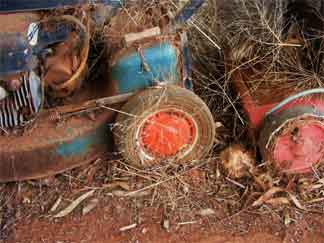This is a perfect time of year to check over your garden and your tools and equipment. Inspect the garden structures – walls, walks, fences and replace and realign them.
Check plants for mechanical or insect damage and treat them before it is too late. Some plants may need replacing or replanting to give your yard and landscape balance.
Cleaning and checking tools can save many hours of valuable time when spring comes calling. The lawn mower should be completely checked and put into condition for spring. Inventory is a chore, but is all important to a busy landscape gardener.
Soil Prep

Soil preparation can be started on days when the weather is good. Take advantage of warm, crisp days to spade flower beds and dig in compost and humus. Working soil now will allow penetration of winter moisture and the freezing and thawing action will improve the physical condition of the soil.
Turning up the soil will also expose certain insects and diseases to the weather, often to kill them in their dormant stages. As the turning of the soil is being done, any garden litter or debris should be disposed of as it also harbors insects and disease pests.
Welcome the Birds to the Winter Landscape
Birds are welcome visitors to the landscape at any time, but especially in winter. Make them welcome by providing a place for food and water – especially water, as this is usually scarce. If these friends are made welcome in the winter garden, they will be there in spring and summer to help combat insects. Because of the life and motion they add to a drab landscape, birds are a beautiful part of the winter scene.
Heavy pruning, the removal of large limbs, should be done during January. As the plants are completely dormant now, it is safe to prune heavily. The wounds will have sufficient time to heal. All wounds over one-fourth inch in diameter should be painted with waterproof paint to speed the healing. All plants except evergreens, spring flowering shrubs and trees may be pruned.
In pruning fruit trees, take care to remove only a minimum of flower buds. Buds on fruit trees and flowering shrubs were set last fall as the plant began to store carbohydrates; therefore, pruning now will reduce the amount of flowers and the resulting fruit. It is best to prune this group of plants following the dropping of the
flowers.
Now is also the time to prepare and recondition any hotbeds or coldframes for starting new seedlings. Seed planting can be started during the last half of the month. Seed orders should be placed so that seeds are on hand for planting at the proper time.
Start the Seedlings
Timing is important in starting the seedlings. Although the germination time for plants varies, a general rule is to plant the seeds approximately six weeks before time for planting outside. It is good business to grow your own seedlings. You not only save the cost of the plants, which is usually considerable, but you also will have many more to use for mass effect in your landscape design, or to share with your friends.
Most important, though, is that plant dealers often will not handle many of the new varieties and therefore they are not available unless you grow them yourself. A small structure for growing seedlings is a good investment for any gardener.
